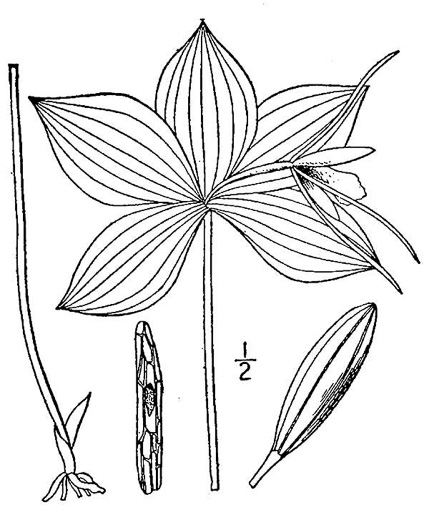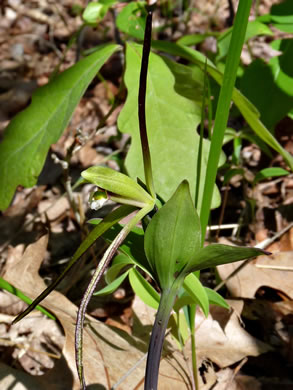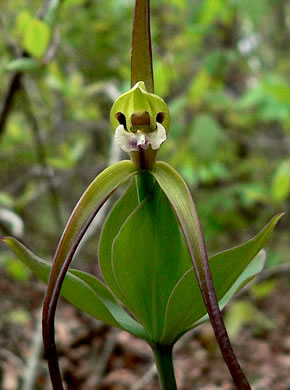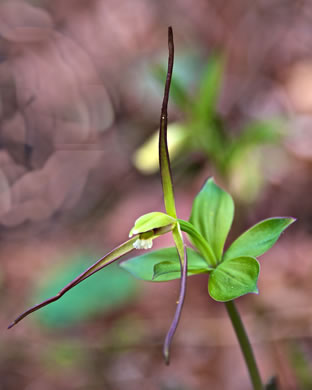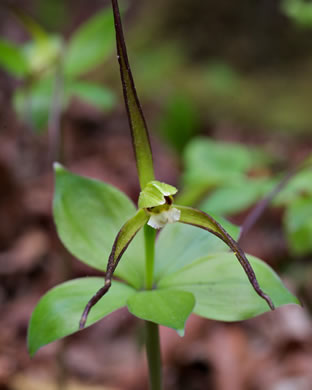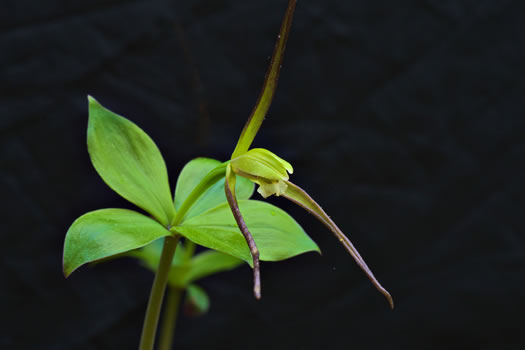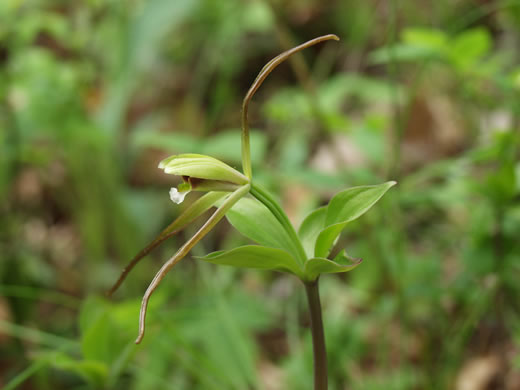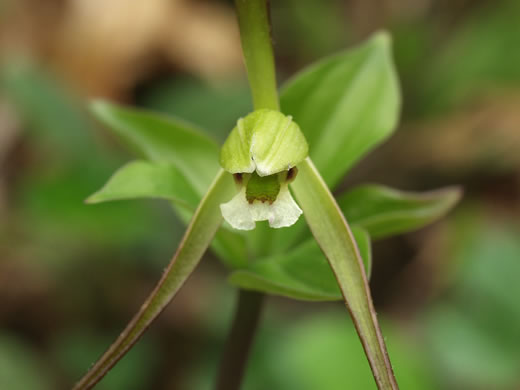Spermatophytes (seed plants): Angiosperms (flowering plants): Monocots: Asparagales
WEAKLEY'S FLORA OF THE SOUTHEASTERN US (4/24/22):
Isotria verticillata
FAMILY
Orchidaceae
Go to FSUS key
Dig deeper at SERNEC, a consortium of southeastern herbaria.
Read more: Isotria verticillata (Large Whorled Pogonia orchid) in Brevard, Transylvania County, NC by Jim Fowler.
Learn more about Large Whorled Pogonia from the Vascular Plants of North Carolina.
SYNONYMOUS WITH
PLANTS NATIONAL DATABASE:
Isotria verticillata
FAMILY
Orchidaceae
SYNONYMOUS WITH Floristic Synthesis of North America. BONAP (Kartesz, 2021)
Isotria verticillata
SYNONYMOUS WITH Guide to the Vascular Plants of Florida (Wunderlin & Hansen, 2011)
Pogonia verticillata
SYNONYMOUS WITH Flora of North America north of Mexico, vol. 26 (2002)
Isotria verticillata
SYNONYMOUS WITH VASCULAR FLORA OF THE CAROLINAS (Radford, Ahles, & Bell, 1968) 049-06-001:
Isotria verticillata FAMILY Orchidaceae
SYNONYMOUS WITH Manual of the Southeastern Flora (Small, 1933, 1938)
Isotria verticillata
COMMON NAME:
Large Whorled Pogonia, Large Five-leaves
To see larger pictures, click or hover over the thumbnails.
Richard and Teresa Ware rtw_i_verticillata_c
April
The long dark sepals & gaping lip resemble a large insect waiting for prey, per Wild Orchids of South Carolina: A Popular Natural History (Fowler, 2005).
Greg Peters glp_05082013_v2
May Transylvania County NC
DuPont Forest
3 long, narrow sepals are light green at base, dark purplish-brown at tips, per Wild Orchids of South Carolina: A Popular Natural History (Fowler, 2005).
![]() COMPARE
Large and Small Whorled Pogonia and Indian Cucumber-root
COMPARE
Large and Small Whorled Pogonia and Indian Cucumber-root
Greg Peters glp_05102013_v2a
May Transylvania County NC
DuPont Forest
The bright green leaves tend to point upward when the plant is in flower, per Wild Orchids of South Carolina: A Popular Natural History (Fowler, 2005).
WEAKLEY'S FLORA OF THE SOUTHEASTERN US (4/24/22):
Isotria verticillata
FAMILY
Orchidaceae
SYNONYMOUS WITH
PLANTS NATIONAL DATABASE:
Isotria verticillata
FAMILY
Orchidaceae
SYNONYMOUS WITH
Floristic Synthesis of North America. BONAP (Kartesz, 2021)
Isotria verticillata
SYNONYMOUS WITH
Guide to the Vascular Plants of Florida (Wunderlin & Hansen, 2011)
Pogonia verticillata
SYNONYMOUS WITH
Flora of North America north of Mexico, vol. 26
Isotria verticillata
SYNONYMOUS WITH
VASCULAR FLORA OF THE CAROLINAS (Radford, Ahles, & Bell, 1968) 049-06-001:
Isotria verticillata
FAMILY
Orchidaceae
SYNONYMOUS WITH
Manual of the Southeastern Flora (Small, 1933, 1938)
Isotria verticillata
If a search such as "Carex leptalea var. leptalea" doesn't deliver the results you want, try "Carex leptalea".
Or, to minimize chances of a misspelling, try just "Carex le".
Less is more: If "pencil flower" doesn't deliver the results you want, try "pencil".

